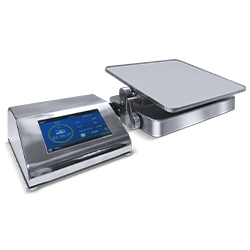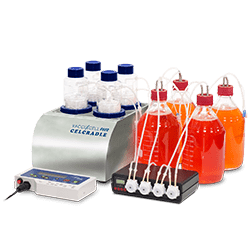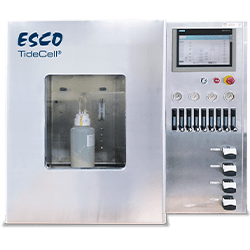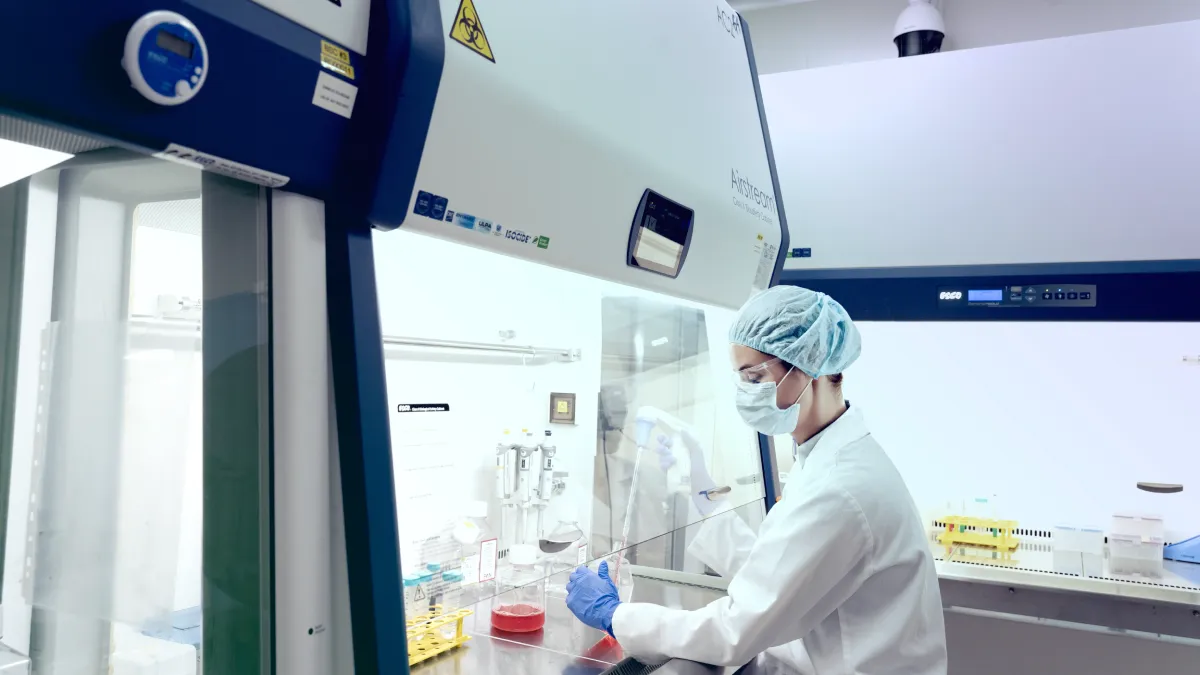There are many different types of bioreactors available in the market today and choosing the right bioreactor system for cells is crucial for cell culture success. The choice of bioreactor system to use highly depend on the type of cells to be produced, the desired product, the process of the cell culture, and the product density. Esco Healthcare offers different types of bioreactors, suited for different types of cells, applications, and scales.
Tide Motion Bioreactors
This type of bioreactor is specific for adherent cells to culture them in an extremely low shear stress environment. The proprietary “Tide Motion” principle is comparable to the gentle upward and downward movement of the culture medium in the vessel. The alternate exposure provides sufficient nutrient and oxygen consumption during cell culture. As adherent cells are surface dependent, these cells can attach to a robust geometrically designed macroporous carrier to mimic its in vivo state as it grows.
Features
- Perfectly suited for stem cell, vaccine, cosmeceutical, extracellular vesicle production
- Combination technology: Multiple-use or Single-use Components
- Linearly scalable from bench to manufacturing scale
- Compact design for saving critical laboratory space
- Dual oxygenation feature
- Run in normal or hypoxic conditions
- Process Modes:
- 100% Media Exchange
- Batch
- Fed-Batch
- Perfusion








